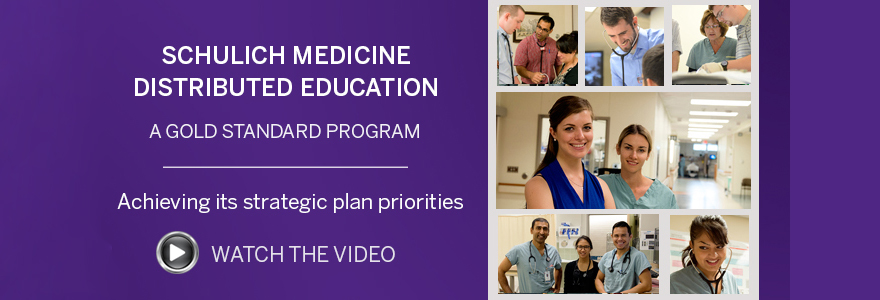Strategic Goals
One of the goals in the Schulich School of Medicine & Dentistry’s 10-year strategic plan “Optimizing Life-Long Health”, is to position our distributed education (DE) models as the leading distributed medical education program in Canada.
In order to achieve this goal, the School undertook an extensive review of its current DE programs identifying strengths and opportunities for improvement, while considering the landscape of DE offerings across the region and the province, as well as the management and funding of distributed medical education to medical schools across the province.
Extensive research, analysis, engagement with leaders, physicians, and faculty across the School’s DE network was undertaken. The information gathered along with a strong eye to the School’s mission and vision informed the preparation of a new Strategic Plan for DE.
The Plan has six strategic directions each with its own set of goals, deliverables
The work required to execute the goals of the Strategic Plan began in early










